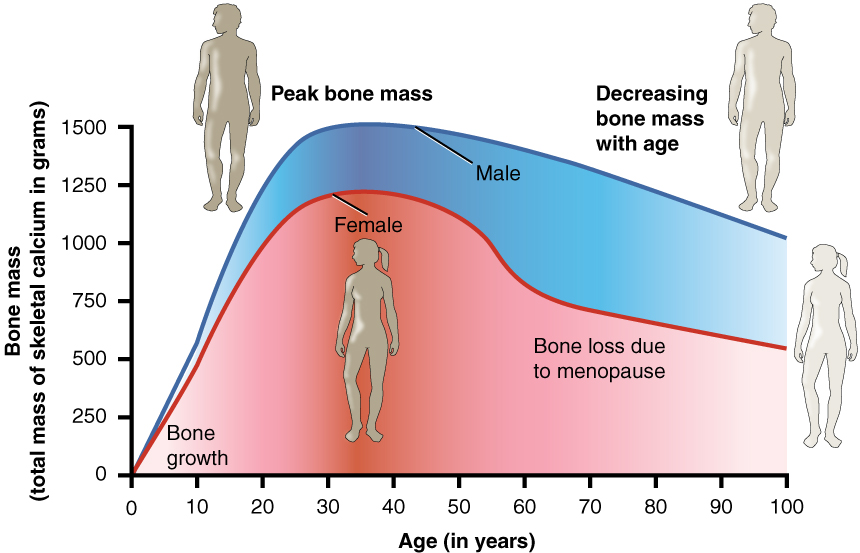Want to eat healthier and lose weight? Feel like it’s a daunting task? Not sure where to start? Fret not! Over the next few paragraphs, you’ll learn about meal plans that actually work. With just a few small adjustments to your weekly routine, you’ll be making healthier choices and losing weight in no time! So, if you’re ready to get started on your weight-loss journey, keep on reading!
Table of Contents
- 1. Making Healthy Eating a Daily Habit: The Secret to Weight Loss!
- 2. Creating Delicious, Nutritious Meal Plans That Set You Up for Success
- 3. Reaping the Benefits of Eating Healthy Foods for Weight Loss
- 4. Overcoming Plateaus with Healthy Menu Adaptations
- 5. Enjoying Healthy Eating for a Lifetime of Wellness and Weight Control
- Question + Answers

1. Making Healthy Eating a Daily Habit: The Secret to Weight Loss!
Despite what you may think, the secret to weight loss is not a strict diet – it’s actually finding ways to make healthy eating part of your daily life.
If you want to reach your ideal weight, it’s important to establish some small habits that become part of your routine, ones that you can stick with even on busy days.
- Instead of skipping meals, try to eat 5 or 6 smaller meals per day.
- Eat slowly and enjoy your food – it will help you feel fuller and prevent overeating.
- Have healthy snacks on hand such as nuts or low-fat yogurt when you are hungry.
- Take the time to plan your meals ahead so you know what you are eating and when.
Making nutritious decisions part of your daily routine may be one of the most effective weight-loss strategies. It’s all about replacing unhealthy habits with healthy ones. Focus on making one change at a time – like adding more veggies to each meal – and soon you will begin to see an impact.

2. Creating Delicious, Nutritious Meal Plans That Set You Up for Success
Eating healthy is essential for achieving both your short and long-term goals, but it can be difficult to do when you don’t have the right meal plan. Having a satisfying meal plan that helps you stay on track with your health goals is key for success. Here are some tips to help you create the perfect meal plan:
Use a variety of ingredients: Eating the same foods every day can become boring quickly, so mix it up to make sure you get the full range of nutrients your body needs. Incorporate fresh vegetables and fruits, and aim to include different colors on your plate. Don’t forget to throw in some whole-grains for a fiber boost and lean protein to keep you feeling full for longer.
Plan ahead of time: Don’t leave it until the last minute to decide what you’re going to eat. By having a general plan for each week, you can save money, time, and stress. Use grocery rewards cards to save money when you buy the items you need for your meals. It’s also a good idea to make a few meals at a time and freeze them for later.
Include your favourite foods: Instead of depriving yourself of the foods you love, try to recreate them in a healthier way. Use olive oil instead of butter, switch out white bread for a whole wheat alternative, and use yogurt instead of sour cream. This way, you can make healthier versions of your favourite dishes without sacrificing taste. Here are some ideas:
- Grilled fish tacos with an avocado-lime sauce
- Roasted vegetables and couscous salad
- Greek-style spinach and feta quiche
- Stuffed mushrooms with herbed ricotta
Creating a meal plan doesn’t have to be overwhelming. By combining your favourite ingredients and planning ahead, you can be sure to create a delicious and nutritious meal plan that sets you up for success.
3. Reaping the Benefits of Eating Healthy Foods for Weight Loss
Eating healthy for weight loss can provide numerous long-term benefits that lead to a healthier lifestyle and better overall quality of life. Here are some of the most important advantages you can expect by eating balanced meals:
1. Achieve Sustainable Weight Loss – Eating healthy helps you reach your desired weight and maintain it in the long run. Healthy foods provide plenty of fiber and protein that helps you feel full for longer and keeps you from unhealthy snacking. You’ll have control over your weight in a responsible and sustainable way.
2. Boost Your Immunity – Eating nutritious foods boosts your immunity and helps your body fight colds, infections, and other health problems. By getting the right balance of vitamins, minerals, proteins, and healthy oils, you can keep your immune system strong and reduce your risk of developing chronic diseases.
3. Improve Your Mental Health – Eating healthy helps your body and mind. Eating nutrient-rich foods can help improve your mood and reduce symptoms of depression and anxiety. Getting a healthy balance of proteins, vitamins, and minerals will also keep your body nourished and energized.
4. Increase Your Metabolism – Eating healthy foods helps keep your metabolism high. Eating the right amount of lean proteins, complex carbs, and healthy fats will help your metabolism run faster and keep you feeling energized throughout the day. This can help with weight loss, too.
- Reach sustainable weight loss
- Boost your immunity
- Improve your mental health
- Increase your metabolism
These are just a few of the many benefits that you can enjoy from eating healthy foods for weight loss. By eating balanced meals and making healthy choices, you’ll have more energy, better moods, improved immunity, and sustained success in reaching your weight loss goals.
4. Overcoming Plateaus with Healthy Menu Adaptations
Attaining any kind of health or weight loss goal tends to involve some plateaus along the way. Changing up your eating habits is one of the most effective ways to help get you over your food rut and make progress towards your goals. Here are some tips for breaking through plateaus with healthy menu adaptations.
Create and Experiment with New Flavors – Breaking through a plateau does not mean you have to go extreme with your eating. You can still enjoy delicious foods while making healthier choices. Adding greens to your diet can be a simple, yet dynamic way to change up your menu. Try out roasting radishes, turnips, beets, or green beans as an accompaniment to dinner or even using them in salads for lunch. Nuts and fruits are also a great way to enhance your meal and can be used to top salads, smoothies, and oats.
Invest in Healthy Convenience Foods – Planning out each meal can be challenging with everyday life, this is where convenience foods come in. But instead of choosing a typical frozen meal, try investing in items that are healthy, yet easy to prepare. Pre-cut and cooked vegetables, marinated seafood, and ready-made marinades are some examples of convenience foods that fight off hunger while also providing you with an array of beneficial nutrients.
Shift Your FOCUS – Rewiring your eating habits means focusing on whole and unprocessed foods. Hit the farmers market and create your own meals with organic produce. Incorporate Vitamin-rich items into each meal such as nourishing nut and seed butters, legumes, or avocados. Making simple switches to your diet like these will help you overcome your plateaus and experience newfound energy with each meal.
- Creating and experimenting with new flavors
- Investing in healthy convenience foods
- Shifting your focus to whole and unprocessed foods
By incorporating these tips into your healthy routine you can make progress and achieve success in your wellness journey.
5. Enjoying Healthy Eating for a Lifetime of Wellness and Weight Control
Healthy eating is essential for a healthy and active lifestyle. You have the power to choose to make healthy food choices that will help you enjoy a lifetime of wellness and weight control.
Make it simple: Eating healthy doesn’t have to be complicated. Start with small steps such as incorporating healthier ingredients into easy recipes that you already enjoy. Begin to swap in whole grains, fresh fruits, and veggies. As you become more comfortable with the idea of healthier eating, you can start to add more plant-based meals into your rotation.
Moderation, not deprivation: Reducing unhealthy sugar and processed food intake doesn’t mean you have to stop eating your favorite treats. Instead, practice portion control and choose to enjoy them in moderation. You can also find healthier, lower-calorie options for some of your favorite dishes.
Create a lifestyle: Eating healthy should be something you enjoy, not just a regimen you must follow. Make healthy eating a lifestyle by finding ways to make healthy meals exciting and experimenting with different recipes and ingredients. Over time, you will learn which ingredients you prefer and how to create healthy meals that you look forward to. Here are a few tips to get you started:
- Look for new recipes from online or cookbooks
- Experiment with spices to add different flavors
- Take advantage of seasonal fruit and vegetables
- Join a community cooking class to learn new recipes
Healthy eating isn’t a goal to reach overnight, but rather something that comes over time as you understand your body’s needs and make conscious decisions about what you eat. Eating healthy can be an enjoyable lifelong journey that leads to a lifetime of wellness and weight control.
Question + Answers
Q: What are the benefits of healthy eating when it comes to weight loss?
A: Eating healthy can be beneficial to weight loss because it helps you consume fewer calories and nutrient-dense foods, while focusing on nutrient balance and proper portioning. Healthy eating encourages your body to burn fat for fuel, helps you build and maintain muscle, and keeps your metabolism running smoothly. Plus, it has benefits for your overall health, such as reducing inflammation and improving blood pressure.
Q: What kind of meal plans are best for losing weight?
A: When looking for meal plans to help you lose weight, it’s important to include nutrient-dense foods like lean proteins, fruits, vegetables, and complex carbohydrates. Eating smaller meals throughout the day can also help you manage your hunger and energy levels while supporting your metabolism. Additionally, focusing on nutrient balance is key. Make sure to get all the essential vitamins and minerals you need by including a variety of fresh fruits and vegetables, as well as lean proteins and quality carbohydrates.
Q: How can I make sure I stay on track with a meal plan for weight loss?
A: Planning ahead is one of the keys to staying on track with your meal plan for weight loss. Make sure to take the time to plan out your healthy meals for the week and create a shopping list so you can stock your refrigerator and pantry with the foods you will need. Setting realistic goals and tracking your progress can also help you stay on course. Finally, make sure to drink plenty of water and get regular exercise to support your overall health and weight loss goals.
Stop making excuses and start living healthy! Eating healthy doesn’t have to be expensive or complicated. With the healthy and budget-friendly meal plans outlined in this article, you can get a jump start on eating healthy and losing weight—or just maintain healthy habits over time. It’s easy, and it’s the best choice you can make for your overall health. So why wait? Take control of your own health today, and you’ll be sure to see the positive effects for years to come.
